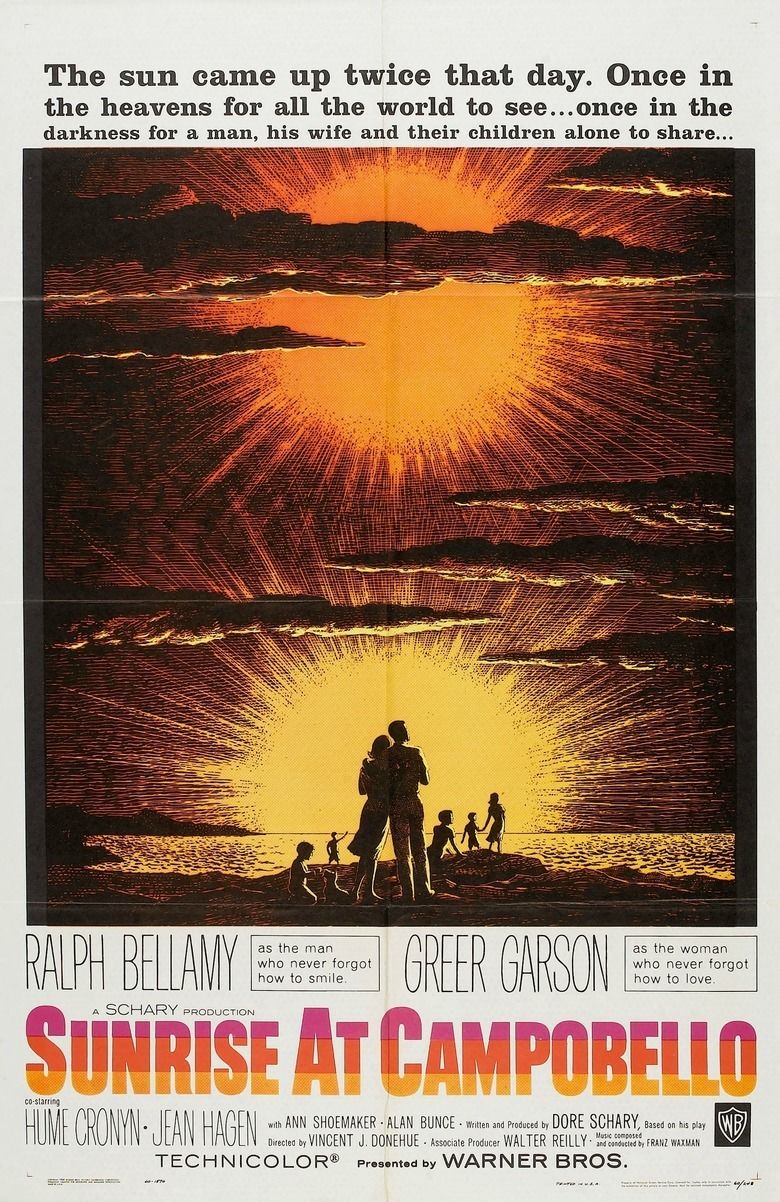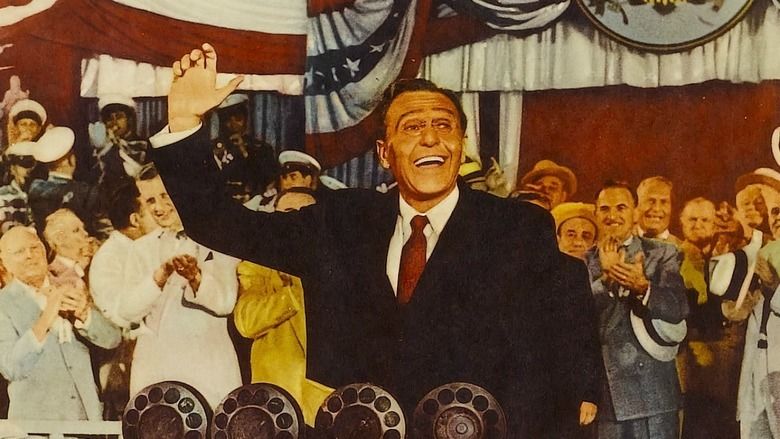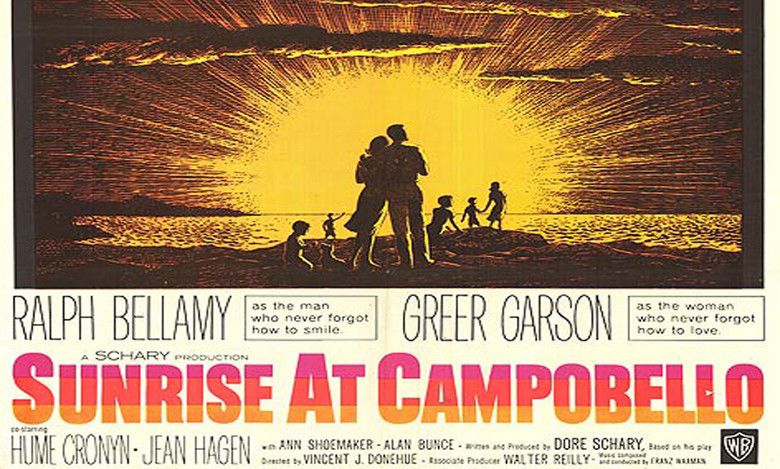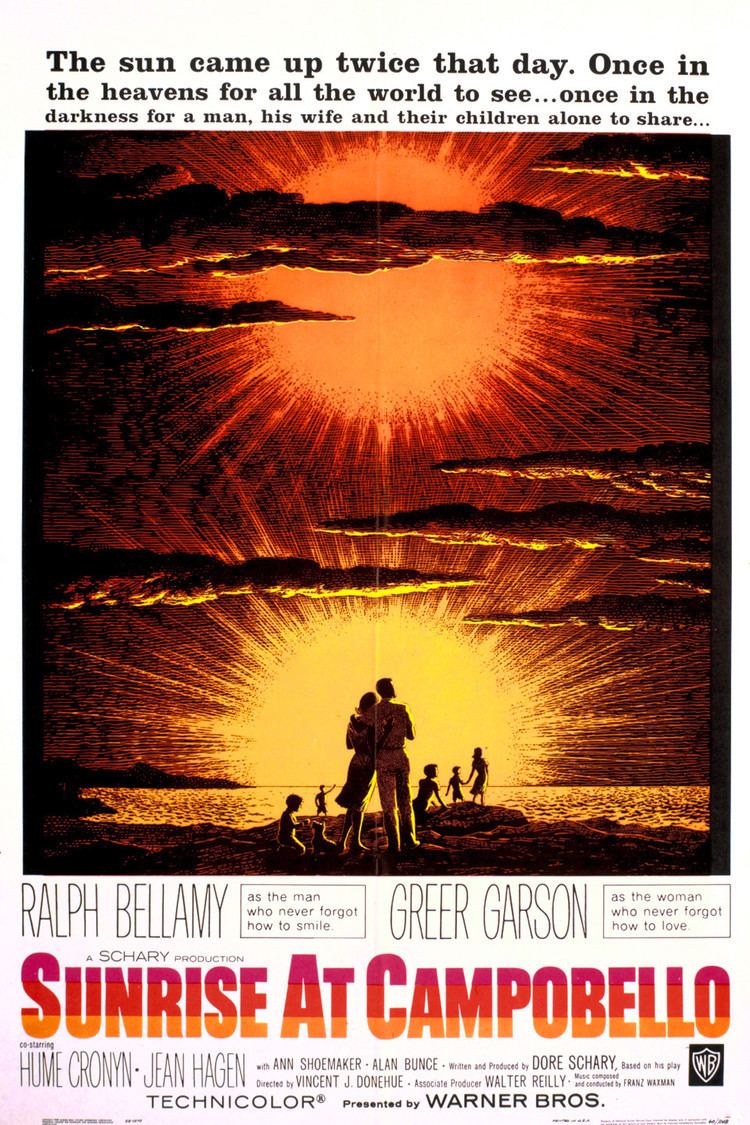Sunrise at Campobello
7 /10 1 Votes7
Duration Language English | 7/10 IMDb Genre Biography, Drama Country United States | |||||||||||||||||||||||||||||||||
 | ||||||||||||||||||||||||||||||||||
Release date September 28, 1960 (1960-09-28) Writer Dore Schary (screenplay), Dore Schary (story) Cast (Franklin Delano Roosevelt), (Eleanor Roosevelt), (Louis Howe), (Missy Le Hand), (Sara Delano Roosevelt), Alan Bunce (Gov. Alfred E. Smith)Similar movies J. Edgar , My Week with Marilyn , Malcolm X , Mandela: Long Walk to Freedom , Man of a Thousand Faces , Nixon Tagline The sun came up twice that day. Once in the heavens for all the world to see... once in the darkness for a man, his wife, and their children alone to share... | ||||||||||||||||||||||||||||||||||
Sunrise at campobello 1960 official trailer ralph bellamy greer garson movie hd
Sunrise at Campobello is a 1960 Warner Bros. biographical film telling the story of the struggles of future President of the United States Franklin Delano Roosevelt and his family when Roosevelt was stricken with paralysis at the age of 39 in August 1921. Based on Dore Schary's Tony Award-winning Broadway play of the same name, the film was directed by Vincent J. Donehue and starred Ralph Bellamy, Greer Garson, Hume Cronyn and Jean Hagen.
Contents
- Sunrise at campobello 1960 official trailer ralph bellamy greer garson movie hd
- Sunrise at campobello 1960 tcm intro
- Plot
- Historical context
- Awards and honors
- Other honors
- References

The film was produced with the cooperation of the Roosevelt family. Eleanor Roosevelt was present on the set during location shooting at the Roosevelt estate in Hyde Park, New York.

Sunrise at campobello 1960 tcm intro
Plot

The film begins at the Roosevelt family's summer home on Campobello Island, New Brunswick, Canada (on the border with Maine), in the summer of 1921. Franklin D. Roosevelt is depicted in early scenes as vigorously athletic, enjoying games with his children and sailing his boat.
He is suddenly stricken with fever and then paralysis. Subsequent scenes focus on the ensuing conflict in the following weeks between the bedridden FDR, his wife Eleanor, his mother Sara, and his close political adviser Louis Howe over FDR's future. A later scene portrays FDR literally dragging himself up the stairs as, through grit and determination, he painfully strives to overcome his physical limitations and not remain an invalid. In the final triumphant scene, FDR is shown re-entering public life as he walks to the speaker's rostrum at a party convention, aided by heavy leg braces and crutches after his eldest son James pushed his father's wheelchair near to the podium.
Historical context
Sunrise at Campobello presents events that took place over four years, from August 1921 to July 1924, culminating in FDR's speech at the 1924 Democratic National Convention.
Before and during Franklin D. Roosevelt's presidency, the extent of his disability was minimized. Sunrise at Campobello depicts the debilitating effects of FDR's paralytic illness to a greater extent than had been previously disclosed by the media.
FDR was diagnosed with polio in 1921, but his symptoms are more consistent with Guillain–Barré syndrome - an autoimmune neuropathy which his doctors failed to consider as a diagnostic possibility. In any case, the film is accurate in the sense that FDR and everyone around him believed that his symptoms were caused by polio.
Awards and honors
Greer Garson won the Golden Globe Award for Best Actress - Motion Picture Drama.
The film was also entered into the 2nd Moscow International Film Festival.
Academy Awards
Other honors
The film is recognized by American Film Institute in these lists:
References
Sunrise at Campobello WikipediaSunrise at Campobello IMDb Sunrise at Campobello themoviedb.org
